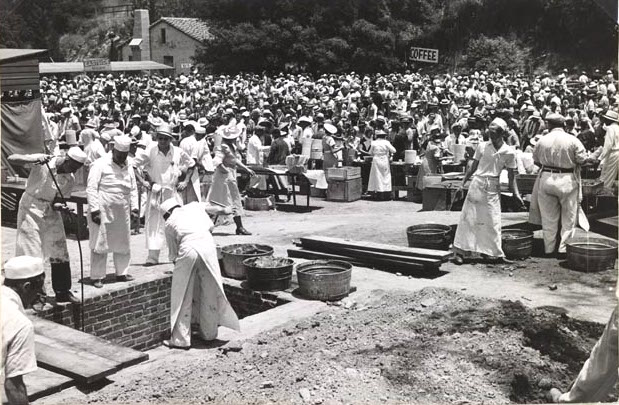By Rick Hendricks [Editor’s Note: This essay is excerpted with permission from Sunshine and Shadows in New Mexico’s Past: The Statehood Period 1912-Present, published by Rio Grande Books (www.RioGrandeBooks.com) in collaboration with the Historical Society of New Mexico.] New Mexico is the only state in the United States that boasts a state question: “red or green?” While such a question …
How the World Cooked ‘Cue in 1878
By Sir Edward Tylor Editor’s Note: Here is a solid—if short—attempt to summarize what was known about outdoor cooking around the world in 1878. This is an early example of food history writing that resonates with me because the author is comparing and contrasting cooking styles from around the world. Tylor is actually debunking claims that Americans invented barbecue. Roasting …
A Barbecue Wedding-Feast in the Southwest
Editor’s Note: For some unknown reason, the author did not specify precisely in what part of the Southwest the events were held. The barbecue was an established institution in the Southwest. It had in no other part of the country so many devotees. There was a charm in the name that would at any time call together a large concourse …
Historical Accounts of South American Chiles
Bolivia, 1892 Pimento.—Fruit of a species of Capsicum, and much used in flavoring. There are several varieties, all found in the valleys of Yungas, the most piquant being that called Vlupiqua, having the size and form of a pea, with a red or green color. That called Locoto is the size of a small egg, and is nearly as strong …
Cooking with Fresh Chile Peppers
By Dave DeWitt, Nancy Gerlach and Jeff Gerlach; Photos by Harald Zoschke Most chile lovers are familiar with New Mexican green chiles, which are the large (5″ to 10″), fleshy, mild chiles that are also called Anaheim chiles. (Anaheim is actually a variety of New Mexico chile, as are Sandia, Big Jim, etc.) These same green chiles are the …





